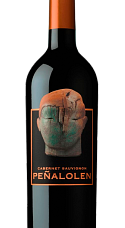Almaviva 2021
Descripción
Estamos ante uno de los mejores tintos chilenos, fruto de la colaboración franco-chilena entre la Baronesa Philippine de Rothschild y D. Eduardo Guilisasti (Viña Concha y Toro). Se elabora con un coupage de variedades clásicas bordelesas que se cultivan en Puente Alto, al sur de Santiago. Cuenta con una crianza de 20 meses, entregando una referencia de taninos sedosos y con carácter fresco y elegante.
Ficha técnica
Cata
Viñedo y elaboración
Opinión de los críticos
A fresh and discreet Almaviva with subtle pencil shavings and cigar box to the cassis and hints of chili chocolate and peppermint. Nuanced and subtle on the nose. This is medium-bodied and subtle on the palate with silky tannins in the seamless finish. Very long. 71% cabernet sauvignon, 22% carmenere, 5% cabernet franc and 2% petit verdot. Drinkable now, but it will take its time to deliver complexity.
2021 was an overall cooler year than 2020, with more elegant wines with more finesse and less angular tannins. The sleek 2021 Almaviva is a good example of that, still very young and still marked by the élevage in oak after spending 20 months in French oak barrels, 71% of them new and the rest only second use. The final blend was 71% Cabernet Sauvignon, 22% Carmenere (from Peumo), 5% Cabernet Franc and 2% Petit Verdot, a variety that might gain in percentage, as they have even planted some more with the idea to possibly replace Merlot in the medium or long term. It's not a shy wine, hitting the scale at 15% alcohol and with mellow acidity, 4.65 grams (tartaric) and a pH of 3.81 The fruit is dark, ripe and spicy, nothing green about it; it's a little shy, less expressive than the warmer years are early on and a little more discreet but with potential to develop in bottle. The tannins are still present, and it should benefit from some more time in bottle. The 2019 had more volume than the 2018, and the 2020 is closer to the 2019 than the 2018. 200,000 bottles produced. It was bottled between late January and early February 2023. I tasted it next to the 2020 and 2018, and it's closer to the latter; but this 2021 is more elegant, and 2018 is a little more austere and herbal.












Añadas: 2021 2019 2018
Esta añada no tiene valoraciones todavía. Pincha en las otras añadas para ver sus valoraciones.
Esta añada no tiene valoraciones todavía. Pincha en las otras añadas para ver sus valoraciones.
Esta añada no tiene valoraciones todavía. Pincha en las otras añadas para ver sus valoraciones.